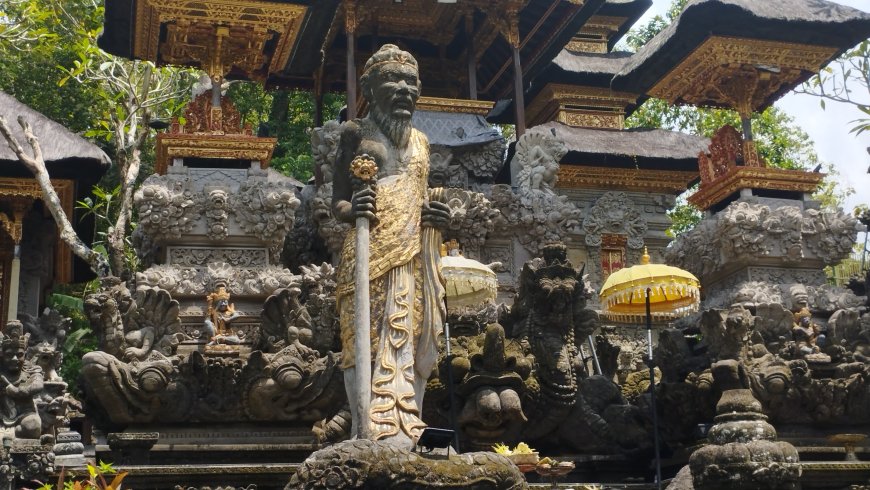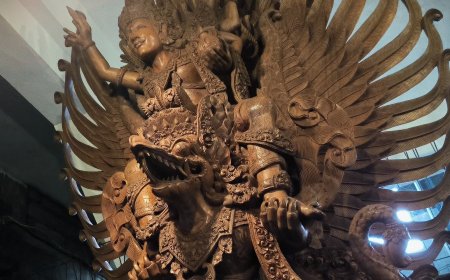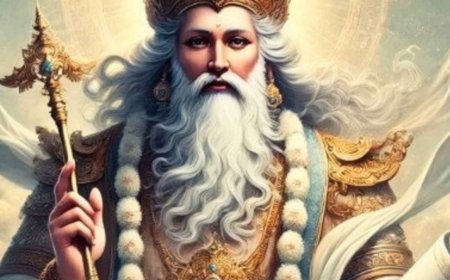Maharsi Markandeya's Sacred Journey to Bali
Bali is one of the islands in Indonesia which has a unique culture. This unique culture is able to attract tourists from abroad to visit Bali. The culture and religion that currently exists in Bali has undergone a fairly long development process. The development of culture and religion in Bali cannot be separated from the influence of previous religious figures. One of the religious figures who influenced the spread and development of Hindu culture and religion in Bali was Maharsi Markandeya.

Maharsi Markandeya is a Hindu religious figure who contributed to the spread of Hinduism in Bali. He is the son of Sang Merkanda and Dewi Manaswini. Maharsi Markandeya was a Rsi who came from India. In Java, he initially lived in the Dieng mountain area which was part of the Ancient Mataram Kingdom (Central Java). However, because at that time a natural disaster occurred, the center of the Mataram Kingdom was moved to East Java. Maharsi Markandeya also moved eastward so that he finally settled in the Mount Raung area (East Java). There he performed austerities and received instructions to go east to the island of Bali.
Before Maharsi Markandeya came to Bali, there were already people who were in Bali, namely people of Austronesian descent. Austronesian people had already spread throughout the Bali region. They live with their respective leaders. This group will later become the forerunner of villages in Bali. They are called the Mula Balinese. At that time the Mula Balinese did not yet adhere to religion, they only worshiped the spirits of their ancestors.
Accompanied by 800 of his followers consisting of the Aga people, he came to Bali across the Segara Rupek (Bali Strait). After arriving in Bali, Maharsi Markandeya headed to the first location, namely Mount Agung. There, Maharsi Markandeya and his followers cleared land for settlement and agriculture. However, mysteriously, most of his followers died either attacked by wild animals or contracted a mysterious disease, so his mission failed. Because of this incident he decided to return to Mount Raung to ask for guidance.
From the results of his meditation on Mount Raung, it was discovered that the reason many of his followers died was because he had not carried out a religious ceremony, namely planting Panca Datu which consists of five types of metal, namely gold, silver, bronze, copper and iron. After learning about this, Maharsi Markandeya then left for Bali accompanied by 400 of his followers. He went to the foot of Mount Agung and carried out the ceremony he knew about. Finally, all of his followers were safe and the place where he carried out the panca datu planting ceremony developed into Besakih Temple.
In Maharsi Markandeya's journey to spread Hinduism in Bali, he built many holy places, one of which is the Payogan Agung Guniung Lebah Temple which is located in Ubud. During his journey he arrived at a small hillside that extended to the south and north, this hill was flanked by two rivers. These two rivers have estuaries that meet so they are called the Campuhan River. Campuhan in Balinese means mixed. In that area, he and his followers cleared land and distributed it to their followers. There he also built a hermitage which eventually developed into a temple called Pura Payogan Agung Gunung Lebah.

Payogan Agung Gunung Lebah Temple (Source: Private Collection)





























































